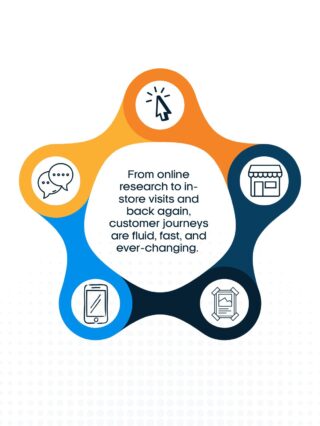One of the first and most pivotal steps in the reporting process is constructing a measurement framework. A properly outlined framework sets reporting and measurement expectations for the stakeholder, while also establishing a relationship between the data and the stakeholder’s business objectives.

First things first, make sure your framework fully answers the following questions:
- What is the brand’s ultimate goal?
- What do we want our campaign to do?
- What are we trying to achieve?
- What do we want to happen?
Establishing thorough answers to these questions will ensure seamless identification of key performance indicators (KPIs) that clearly align with the campaign goals. Impression volume and clickthrough rate (CTR) are useful metrics that may indicate success of an awareness-driven campaign, while high value site actions may help gauge site engagement. These high value actions (HVAs) can range from downloading a PDF, to signing up for email notifications. While the KPIs and HVAs you measure will be greatly influenced by the goal of the campaign, it is important to keep in mind the industry in which you work. For example, the ideal primary KPI for an e-commerce site will be sales. Carefully selecting HVAs and using them as a KPI can be a useful way to see if the audience is engaged with a website.
Once KPIs are clearly defined, the next step would be to distinguish how those KPIs are going to be broken down. In most cases, KPIs are measured over time, such as by year, quarter, month, or even day, depending on the specifics of the campaign. Other ways KPIs can be broken down include by publisher, tactic, device type, geography, campaign, or creative. To pick the dimensions that would best suit the KPIs, it is always recommended to go back to the campaign goal and figure out which specific dimensions are going to help achieve that goal.
Supplemental metrics are also a vital part of the measurement framework. These are classified as metrics that are still important to track, but do not necessarily define a campaign’s success or failure. Examples of supplemental metrics include bounce rate, number of sessions, average session duration, clickthrough rate, and total spend. Although these values may not be at the center of the framework, they are still invaluable in measuring engagement and awareness.
A fully developed measurement framework does not only organize the campaign goals and KPIs, but may also outline the layout of your dashboard. Having a well-organized and pressure-tested framework creates the perfect backbone for building a new dashboard. By establishing clear KPIs that measure the success of a campaign, choosing the focal points of the dashboard should be a no brainer. Creating a separate section for each KPI within the dashboard makes it easy to spotlight each KPI and determine how well it is performing. Successful campaigns are built around data and, with the proper foundation of a measurement framework in place, the sky’s the limit.





